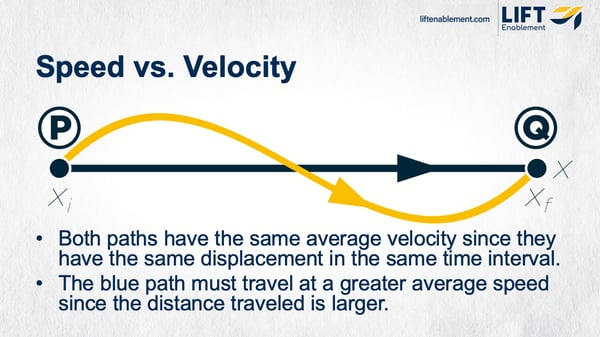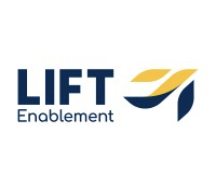 Since the dawn of time, sales and marketing leaders have spent way too much effort trying to blame each other for downturns in revenue and to take sole credit for upturns. Data and metrics can help organizations move away from this toxic competition (and, coincidentally, show where real breakdowns in the customer journey occur) - but only if you know what data to use.
Since the dawn of time, sales and marketing leaders have spent way too much effort trying to blame each other for downturns in revenue and to take sole credit for upturns. Data and metrics can help organizations move away from this toxic competition (and, coincidentally, show where real breakdowns in the customer journey occur) - but only if you know what data to use.
Take a stereotypical situation - quarterly revenue is down. Quotas aren’t being met. The board is demanding answers, and the VPs of Sales and Marketing, respectively, find themselves in a boardroom looking to justify their budget, bonuses, and continued employment.
First up is marketing: “It’s not our fault. Sales isn’t working the leads we send them right. Something is wrong with the sales team.”
Next up is sales: “It’s not our fault, marketing isn’t sending us enough good leads to work, and the promotional materials they made us aren’t speaking to leads.”
At this point, it becomes a battle of wills and charisma to throw the other person under the bus and keep yourself and your team safe, but what happens when revenue continues to lag and you’ve already burned your “It’s not my fault” card?
Sales and marketing are a team with a shared goal: drive revenue. When that’s not happening up to expectations, it means something in the revenue engine is misaligned, and it’s time to put a RevOps microscope onto your data to find out where the misalignment sits.
Importantly, this isn’t about assigning blame, but rather about fixing broken processes so that the company can hit its growth numbers going forward.
Defining The Right Metrics
 Data is what you need to identify these breakdowns, but choosing the right data is important. Too often, people rely on vanity metrics - number of outbound phone calls, number of visits to the site, raw number of leads generated - to get a surface-level idea of whether one organization or the other isn’t doing enough. Further analysis is needed, though, to identify the reason behind shifts in conversion velocity.
Data is what you need to identify these breakdowns, but choosing the right data is important. Too often, people rely on vanity metrics - number of outbound phone calls, number of visits to the site, raw number of leads generated - to get a surface-level idea of whether one organization or the other isn’t doing enough. Further analysis is needed, though, to identify the reason behind shifts in conversion velocity.
Phone calls are a great metric of sales keeping busy, but are they calling the right people? Are they calling at the right time? Are they following a proven pattern of outreach? Do their talk tracks hit on the leads’ needs, and are leads getting calls receiving supplemental marketing communications?
Visits to the site is a nice metric for marketing efforts, but are the visitors actually converting? Are they reaching the right parts of the site, and are the right people visiting? Where are visitors dropping off if they don’t convert?
Leads are the lifeblood of any sales organization, but are the right leads coming into the pipeline? Once they’re in, are they being properly nurtured and worked, or are we jumping straight to the close before they’re ready?
Here are some metrics to help identify the breakdown, broken out by customer journey step:
Discovery Phase
If you’re familiar with our DEALS Selling Framework, you know that the Discovery phase exists to identify your ideal customer. A breakdown in the Discovery phase can result in lower lead engagement and conversion rates further along the buyer journey. Metrics to look at in this phase include:

Identified right-fit accounts/target personas
Don’t look at the top of the funnel as a pure numbers game, where bigger is always automatically better. Instead, look at the raw number of new leads coming in that fit your ICP. If the number of right-fit accounts coming into the funnel has declined, and that corresponds with a decline in close rate, marketing needs to look at their sources of leads and consider whether your clients are actually there.
Qualified account yield
What percentage of new leads coming into your funnel fit the above criteria? How has that percentage changed over the course of time, and how long before revenue started to stall did you see a decline (if you did)? If this percentage has been declining, marketing needs to, again, look at their sources of leads and consider moving spend to a channel with a higher yield. It could well be that leads who would be part of qualified accounts have migrated to a different service or source of content.
Lead velocity
Importantly, this doesn’t mean lead speed; lead velocity calculates the lead’s engagement with meaningful activities over the course of time. This can be impacted by either marketing or sales providing leads earlier in the buyer journey with content that has historically helped move leads along from specific points along the journey. You can learn more about lead velocity here. If gaps between meaningful activities have gotten larger, check your nurture campaigns and sales playbooks; they may be broken or simply not being followed. If the distribution of meaningful content has remained constant, but engagement has suffered, then it’s time to reimagine your outreach cadence and content.

Engage Phase
During this phase of the buyer journey, the name of the game is getting the lead to engage more directly with your organization. Lead velocity remains an important metric here; some other important metrics include:
Top pages by target personas
If you have identified specific pages on your site that are of specific interest to your target personas, has traffic to those pages declined? Have conversion rates declined on those pages? Looking through your database, are the right personas finding the right pages, or is there a shift in traffic share away from the group who would be most likely to respond positively towards a more general audience? Further, how do target personas typically find these pages? The pages could have lost search rankings, there could be a campaign that drove traffic to them that has been turned off, or they could be a sales-led visit that simply isn’t being suggested anymore. Here underscores the importance of sales and marketing understanding what promotional materials are designed for what persona - and how that persona is engaging.
Blog subscribers
The Engage phase isn’t a hard sell - you want to provide real, meaningful value to leads, and a great leading indicator of that value is whether or not leads subscribe to your content (in this case, your blog). Blog subscriptions give you a toe-hold with a lead, as they have raised their hand to let you know that they like your content, they find value in your content, and they wish to continue receiving your content. A decline in subscriptions or subscription rate could indicate your blog content has taken a hit in quality, or it’s simply not hitting on the topics your target audience cares about right now.
Activate Phase
In the Activate phase, you’re building and expanding your relationship with the lead. This is still not the moment to shift into sell-now mode, as the lead isn’t yet at the point where they’ll take risky or effortful actions, and they’re still at a point where sales pressure will most likely drive them away. The biggest question you should ask yourself is whether or not you’re skipping the Activate phase entirely, or at least shifting into the full-court press too early. Some metrics to look at include:
Return visits
Are leads returning to your site and consuming more content? Are they coming back to the site, specifically looking at solutions pages? One great way to determine whether you’re prematurely trying to exit the Activate phase is to look at return visits before and after sales rep activities. If, for example, you have a phone call from a rep in your playbook, and you find that return visits drop noticeably after said phone call, chances are good that you’re trying to close the deal too early and scaring off leads.
Email engagement
 At this point, your lead may be receiving a few different sources of emails. They could be getting general drip campaigns, more tailored drip campaigns (specific to a particular persona, or industry), and they’re probably getting semi-regular pings from their assigned sales rep. Compare engagement rates of different levels of pressure (from the purely educational/informational to time-sensitive deals to direct sales emails with selling pressure) to see if leads are engaging with one but not the other. Also, this is another good opportunity to look at a before-and-after snapshot of leads who have received their first true “sales” email. They may need more low-pressure informational content, and it’s always possible that trying to close too early makes a lead completely tune out your organization.
At this point, your lead may be receiving a few different sources of emails. They could be getting general drip campaigns, more tailored drip campaigns (specific to a particular persona, or industry), and they’re probably getting semi-regular pings from their assigned sales rep. Compare engagement rates of different levels of pressure (from the purely educational/informational to time-sensitive deals to direct sales emails with selling pressure) to see if leads are engaging with one but not the other. Also, this is another good opportunity to look at a before-and-after snapshot of leads who have received their first true “sales” email. They may need more low-pressure informational content, and it’s always possible that trying to close too early makes a lead completely tune out your organization.
Launch Stage
Now, it’s time to sell. If your pipeline leading up to this point looks healthy, then it’s time to look at your actual buying cycle and active sales metrics. Here, you’re looking at more traditional sales metrics - like Close Rate and Win Rate - in addition to metrics that are relevant all across the real buyer’s journey like Sales Velocity. Another important metric to consider here:
Time per opportunity
How long does it take a fully-baked prospect to go from entering the Launch stage to closing? Is there a correlation between how long it takes to close a deal and, say, the opportunity company’s size? Industry? Buyer profile? Do longer close times correlate with larger average selling prices? If so, you may be in luck with a pipeline of whales that simply take longer to say “yes.” Remember, the goal isn’t just to close deals, but rather to close bigger deals in as timely a fashion as possible. However, if time per opportunity is increasing but ASP (Average Selling Price) is not, it’s time to look at your sales team’s closing strategy as well as whether demographic or firmographic indicators imply a longer sales cycle for your current pipeline makeup.
As you can see, looking at simple, top-level metrics to try and assign revenue blame to sales or marketing can leave you with a lot of uncovered issues in your process. In addition to the hit to morale and the potential loss of good employees, you’re leaving yourself in the same position you were in before - after driving a wedge between two parts of your organization that have to work together, you’re almost guaranteeing a continuation of downward trends.
Using data, we can fix process issues. Don’t waste time, goodwill and good employees trying to throw blame around. The only outcome of that is that next time, it’ll be harder to get that blame to stick.

 Lift Enablement
Lift Enablement
